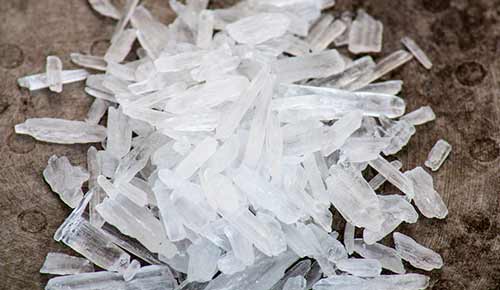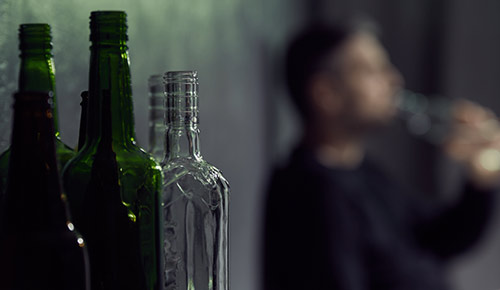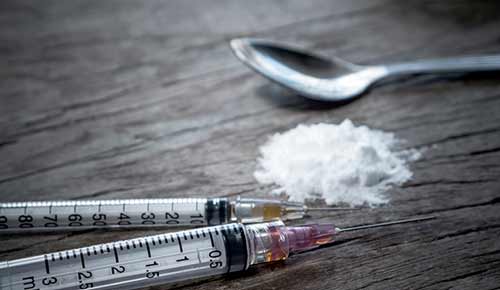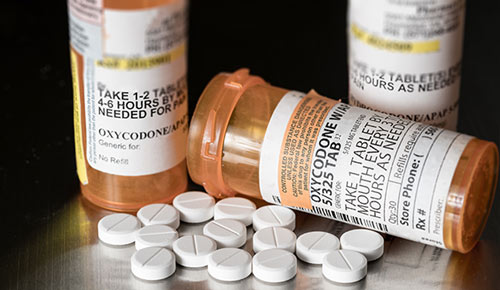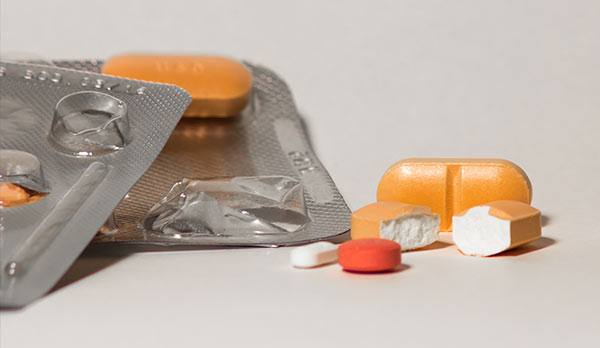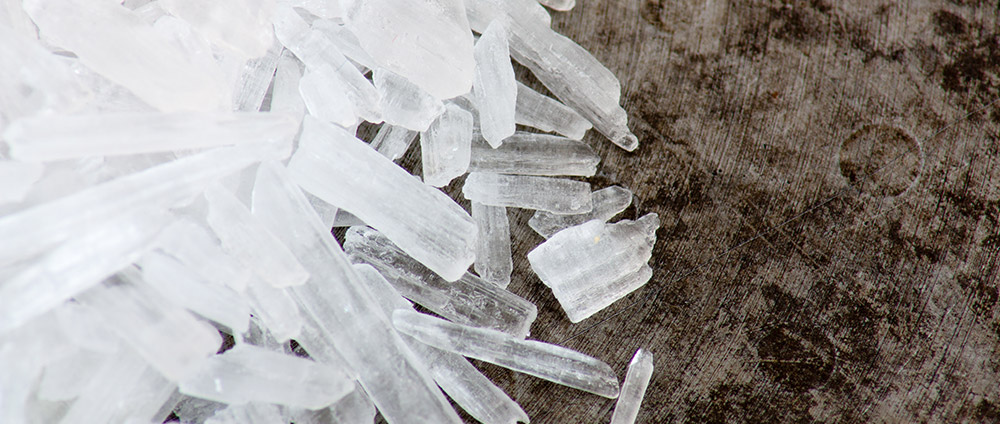
Meth Addiction
Meth (methamphetamine) is an illegal manmade stimulant drug that works similarly to cocaine and crack. Meth comes in a crystal (crystal meth), powder, pill, or liquid form and can be smoked, snorted, injected, or eaten. Effects include an energy rush, excessive activity, agitation, aggression, and insomnia. Depending on what form it is and how it’s used, the effects of meth can last 6-24 hours.
People who abuse meth often take it right away after symptoms fade, which can increase the risk of overdose. That’s why if you suspect that you or someone you know is using meth it’s important to get help. For more information, call us at 503-850-2474.
What’s in Meth?:
Addiction to meth is deadly, not just because of what it can do, but because of what it is made of:
- Pseudoephedrine – Found in over-the-counter cold medicines
- Acetone – An extremely flammable ingredient in paint thinner and nail polish remover.
- Sodium Hydroxide – A corrosive chemical more commonly known as lye, it can cause skin burns and blindness.
- Sulfuric Acid – Another corrosive substance, commonly found in drain cleaner.
- Anhydrous Ammonia – Sometimes found in fertilizer and household cleaners. If mixed with certain other chemicals, it creates a poisonous gas.
- Lithium – A highly explosive ingredient in batteries that reacts violently with water.
- Hydrochloric Acid – This chemical is an ingredient in plastic, and is so corrosive that it can not only dissolve rust but can melt your skin.
- Red phosphorus – Found on a matchbox strike strip, it is highly flammable and also used as an ingredient in road flares.
- Toluene – An ingredient in brake fluid that is so corrosive that it can dissolve rubber.
Signs of Meth Addiction
According to the Diagnostic and Statistical Manual (DSM-V), if over the last 12 months, 2-3 of the following statements are true you have a mild meth use disorder. If 4-5 are true it’s a moderate meth addiction, while 6 or more is considered severe.
- Using meth even in situations that have put yourself or others in danger. Examples include overdosing, driving under the influence, or operating heavy machinery.
- You’ve neglected professional, academic, or personal responsibilities in order to use meth, get meth, or recover from a meth crash.
- Experiencing had social or interpersonal problems such as loss of friends, family, or loved one caused by your meth use
- Having withdrawal symptoms when attempting to quit or not using meth
- Needing more and more meth to get the same feeling you did when you started using it (AKA tolerance)
- You’ve begun using larger amounts of meth and/or using it for longer amounts of time than you used to.
- One or more failed attempts to decrease or quit your meth use
- Spending large amounts of time abusing meth
- Developing physical or psychological problems due to meth use
- Giving up hobbies, activities, or responsibilities in order to use or get meth
- Having drug cravings or “needing” to use meth.
Effects of Meth:
When taken, meth speeds up (stimulates) your central nervous system which controls your body and brain. The result is hyperactivity, increased talkativeness, a pleasurable rush of energy, a false sense of happiness, or invincibility/confidence. Meth achieves these effects by rapidly depleting your brain and body of the hormones and neurotransmitters normally responsible for creating these feelings. As a result, when the effects wear off your body “crashes” into a depleted state of exhaustion (aches and pains, no energy, depression, agitation, confusion, etc).
Meth Recovery: How To Get Off Meth
The best way to quit meth is to attend detox, rehab, and aftercare. Long term use of meth can change your brain and lead to dependence or addiction. In addition to uncomfortable physical withdrawals in the first week after stopping meth, this can also mean having meth cravings for several months after quitting. Since this can be a relapse-risk, it’s helpful to use professional help like:
Detox: Detox provides a medically supervised environment to keep you as comfortable as possible during meth withdrawal symptoms. This includes medicines to ease any discomfort while your body overcomes its dependence on meth.
Rehab: The purpose of rehab is to help you understand what drove you to meth and give you tools that will help you thrive in sobriety. Important takeaways from rehab include
- A New Perspective: Healthy ways to cope with emotions without meth.
- Social Fitness: Creating meaningful relationships with people whose support and friendship will provide future support.
- Physical Fitness: Nothing creates drug cravings better than stress. Exercise is a proven way to increase the body’s resilience to stress and to relieve. The idea is that after a while it will take more and more to stress you out, and that exercise can be used as a tool to relieve stress.
- Sustainable Sobriety: Find appealing hobbies and activities that will give you reasons to stay sober.
- Relapse Prevention: Tools from evidence-based practices to help you stay sober during difficult times.
Tree House Recovery provides 3 to 5 months of treatment for people struggling with meth or any kind of substance abuse. Our program is action-based because we believe in giving you holistic control over your sobriety. For more information, call 503-850-2474.
Aftercare: Aftercare is somewhat of a checkup for people who have finished rehab. It includes a handful of 1-hour therapy sessions (during the evening to accommodate work schedules) every week. These sessions can be a debrief on achievements or a place to troubleshoot any struggles.
How To Know If A Loved One Is Using Meth:
If you’re wondering how to know if someone is using meth, look for the following signs or behaviors
Signs and Symptoms of Meth Use:
- Having excessive energy
- Rapid or excessive talking
- Increased alertness, anxiety, or paranoia without cause
- Loss of appetite
- Not sleeping regularly or at all.
- Being irritable, agitated, or aggressive
- Having odd mood swings from normal behavior to high energy. Or from high energy to extremely low energy levels
- Confusion
- Shakes or tremors.
- Weight loss (clothes don’t fit or always wearing baggy clothes)
- Poor hygiene
- Rotting teeth
- Skin sores (or baggy clothes in warm weather)
- Large pupils
- Rapid eye movement
- Skin burns. Usually on the hands and fingers
- Twitching, facial tics, jerky movements
What Does Meth Look Like?:
Powdered Meth: Powdered meth is the raw unprocessed form of the drug. Meth powder looks like a fine white, off-white, blueish, red/pink, or green powder. It’s color depends on the ingredients used to make it. The powder is odorless, dissolves easily in water, and has a bitter taste (note: eating the powder will activate its effects).
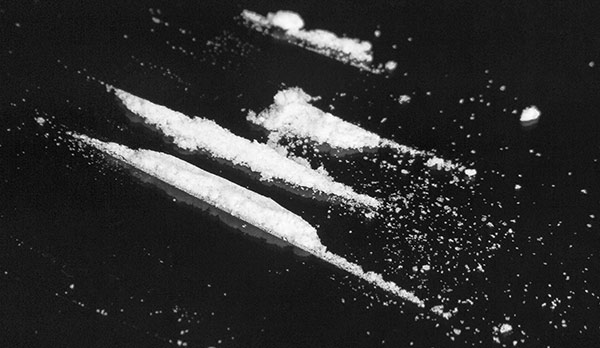
Meth in its powdered form can also be made into crystal meth, dissolved into liquid form, or combined with caffeine to make tablets. It’s made in home labs (called meth labs or meth houses). The process produces several dangerous corrosive, toxic, and combustible gases. They burn the skin and lungs on contact, cause headaches, dizziness, faintness, nausea, vomiting, or trouble breathing if inhaled, and can destroy entire homes if ignited.
“Crystal” Meth: As the name implies, Crystal Meth looks similar to glass-like crystals. These crystals may range from bluish-white, yellow, brown or even pink depending on what it was cooked. The crystals may also be different sizes. Larger quantities of crystal meth small icicles. Smaller amounts look more like unusually large salt crystals.
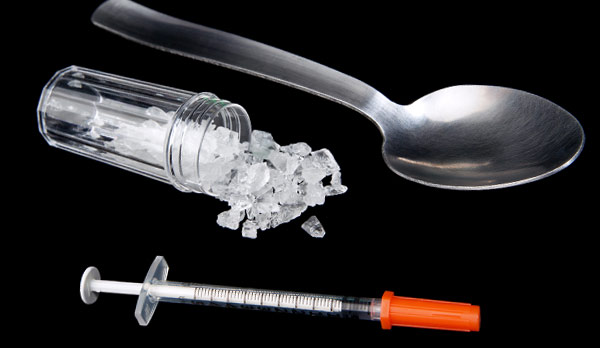
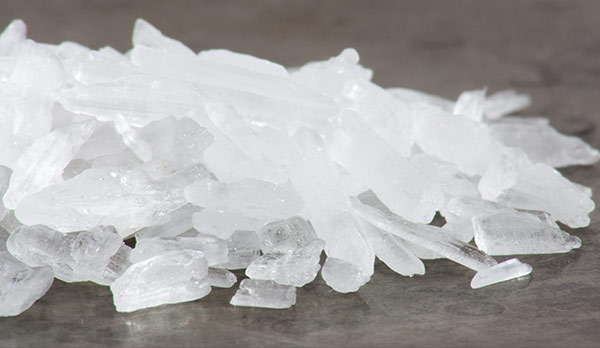
Crystal meth is produced by combining the powder with solvents (often in cartel-funded super labs) to remove all the additives and impurities. As a result, crystal meth is the most potent form of the drug which means the risk of overdose is much higher.
Meth Tablets: Small green, white, reddish, or blue pills (usually called yaba) that contain caffeine and around 30% meth. They sometimes have an R or WY stamped on them and are sold at raves and dance parties.

Meth tablets or pills are most common in East Asia including Burma and Thailand, but according to the DEA, they are being trafficked through mail to the United States. They are made by combining the powder with solvents and caffeine, which makes it the least potent form of the drug.
Knowing if Someone is Using Meth: What to Look, Smell, and Listen For
Meth Paraphernalia: What to Look for: In addition to being able to know what meth looks like (described above) or recognize the signs that someone’s abusing it, you can also search your living space for drug paraphernalia (equipment or materials needed to use drugs). Finding any of the following things is a strong indication that someone is using meth.
- Glass Meth Pipes: Meth pipes may have different designs but most have long noodle-like stems that lead to a round circular chamber with a small hole on top. Used pipes will have black burn marks on the bottom of the circular chamber. It will also have a yellow-black waxy residue inside the chamber (this is the meth residue).
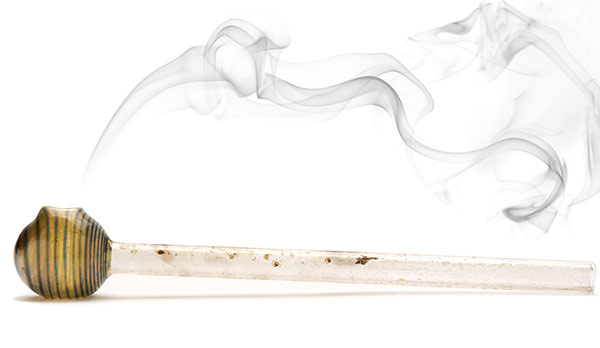
- Home Made Meth Pipes: Look for lightbulbs that have had all their parts emptied from the inside. To confirm if it’s been used to smoke meth, you should see burn marks on the outside of the bulb. Aluminum cans (like soda) can also be used. Normally holes are poked in the side of the can and burn marks can be found on the bottom of the can.
- Burnt Aluminum Foil: Some meth users will put the drug on foil, heat the foil, and inhale the vapors. If you find discarded aluminum foil with burn marks and/or waxy residue this indicates meth use. NOTE: Straws or hollowed-out pens are used to inhale meth vapors.
- Needles or Syringes: if someone has no medical need for a hypodermic needle, then finding one indicates they are using some kind of illegal drug. Mostly likely heroin, meth, or coke.
- Plastic Sandwich bags: These are used to transport meth rather than use it. However, if you notice an odd amount of discarded bags check them. If you see any blue, red, or white powder or crystal residue inside, you can have that tested using a drug kit at Walgreens or RiteAid.
Odor: What Does Meth Smoke Smell Like?: The most common way of using meth is to smoke it. When it is smoked the smell resembles burning plastic or strong cleaning chemicals. These smells linger on a person, and they may smell vaguely of ammonia as well.
Recognizing Meth Slang for Meth: Because it’s an illegal substance, people who use crystal meth have ways to refer to the drug, people who use it, and people who are on it. If you hear someone using one of these terms, it’s possible they could be using Meth.
- Crank
- Crystal, Crystal Glass, Crystal Meth
- Christina, Tina, Cris, Cristy
- Chalk, Chalk Dust
- Speed
- Geep, Getter, Getgo, Go Fast
- G
- Trash, Garbage, Wash
- Ice, Hot Ice, Super Ice
- Batu
- LA Glass, LA Ice
- Ice Cream, Cream
- Quartz
- Chunky Love
- Cookies
- Cotton Candy
- Dunk
- Gak
- Go-Go Juice
- Junk
- No Doze
- Rocket Fuel
Slang for Getting High on Meth: Tweaking, Getting tweaked, Getting geared up, Chicken flipping, Hot rolling, Getting fried or foiled, Zooming, Getting scattered or spun out, Hot Railing, Getting glassed, going all Tweakened Long
Slang For A Meth User: Crankster Gangster, Lithium Scab or Scabber, Meth Monster, Tweaker, Meth Head, Speed Freak, a Wooop Chicken, or Box Lab.
Understanding Meth Addiction:
How Does Someone Get Addicted to Meth?:
Meth floods the brain with dopamine when it’s taken, it also produces a burst of energy and euphoria. Think back to the last time that you were in such a good mood that you just couldn’t stop moving. This is similar to a meth high and certain people fall quickly in love with the ability to create this feeling that they don’t realize how quickly meth takes control of their life. The truly insidious thing about meth is that it doesn’t just stop working. It causes you to crash into nearly the exact opposite state of the high. You feel tired but wired, anxious, groggy, grouchy, and like you have no energy to do anything. Worse is that this seems so much worse compared to how you just felt while high. Most people opt to use more meth to get rid of this feeling.
As they keep using meth every few hours when the previous high wears off, their body quickly builds tolerance and becomes used to the flood of pleasurable dopamine. Not long afterward your body stops making its own supply of dopamine and as a result, you don’t feel normal unless you’re on meth or used it recently. This cycle continues until you begin experiencing psychological cravings for meth and physical withdrawals if you go too long without it.
What Causes Meth Addiction:
The cause of addiction is not yet perfectly understood. What is known is that it’s not a moral or personal failing like many people once believed. Most of the time there are several overlapping reasons that people become addicted to substances. These reasons include:
- Mental Disorders: People with mental health problems have been found to be far more likely to have substance abuse disorder compared to the general population. One theory is that drug abuse begins as self-medicating their mental health problem and evolves into drug misuse.
- Genetics: Studies show a strong correlation between substance use and a family history of substance use. Although there is no gene for substance abuse that’s been identified, having an immediate family member with substance abuse can make it up to 50% more likely that you will too.
- History: Children who experienced trauma early on (physical abuse, sexual abuse, or neglect) are more likely to develop problems later on [1]. For those with adverse childhood experiences, drugs help numb the pain.
- Gender: Men are more likely than women to have a substance abuse disorder.
Take Back Your Life From Meth:
Tree House Recovery is a holistic drug rehab facility for men. Our approach is to help you understand the cause of your addiction, teach you how to deal with stressors and triggers, and use action-based practices to make you mentally, physically, and socially than you were before or during your active addiction. For more information call 503-850-2474.

